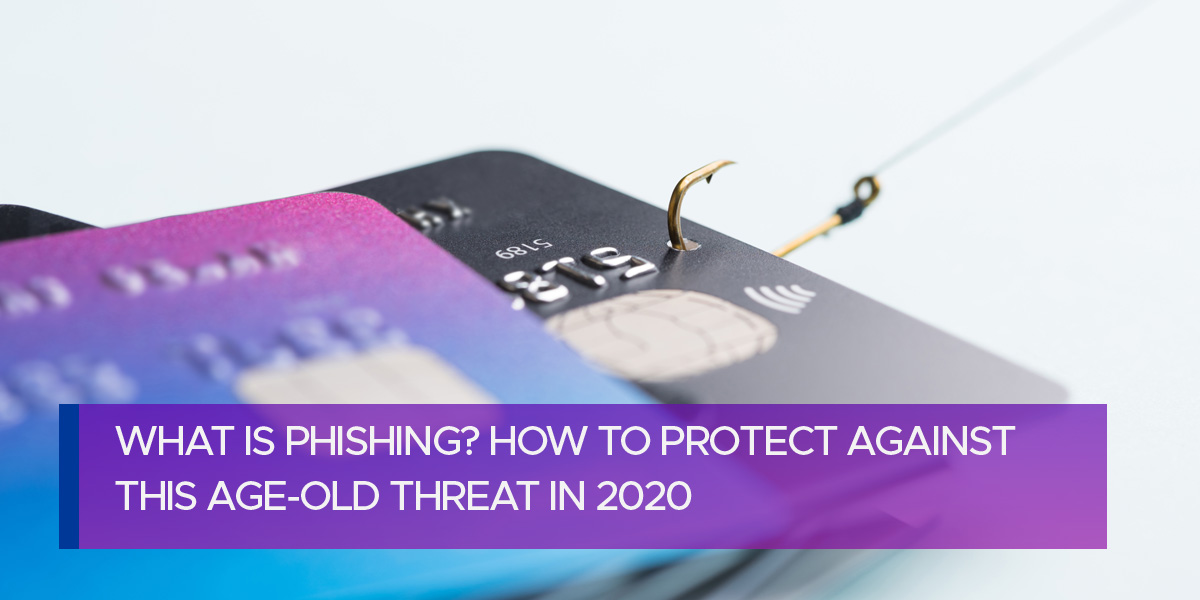
What Is Phishing? How to Protect Against This Age-Old Threat in 2020
Most people have heard the term, but not everyone knows what phishing is, exactly. It’s one of the oldest tricks in the book, first appearing on the internet sometime around 1994. It’s also one of the most popular tactics that cybercriminals employ today to gain access to a company’s private network. Why? It works.
In its 2019 cybersecurity report, Cisco reports that phishing is one of the most prevalent cybersecurity threats in existence, and also one of the most effective. At least 70 percent of survey respondents indicated that it was difficult to spot an email threat adequately.
Phishing has the potential to cripple a business because a successful attack grants a hacker unbridled access to a company’s network. Read on to learn about the latest in the world of phishing, strategies to protect a business in 2020, and how managed network services improve a company’s phishing defenses.
What Is Phishing? An Old Trick That Still Works
Phishing is the fraudulent attempt to trick someone into handing over sensitive information or login credentials by disguising an email as legitimate communication from another company or service. It falls into the category of social engineering attacks, as it relies on deception and the assumption that the recipient is expecting to receive a similar email.
While many people are familiar with the stereotypical foreign heiress emails (sometimes called the Nigerian Prince scam), phishing emails that target businesses have gotten a lot more sophisticated and varied in their tactics. It can be challenging to identify at a glance how legitimate an email is. Likewise, phishing is dangerous because:
- It’s targeted: Attackers don’t blanket send phishing emails. They research an organization, determine who to send the email to, and figure out what emails to spoof.
- Emails may come from a variety of apparent sources: Phishing emails aren’t always fake bank communications. According to Cisco, 2019 saw an uptick in phishing emails pretending to be CEOs or other high-level executives in a company.
- People take email security for granted: Email is widely regarded as safe by employees. However, that’s not always the case.
Strategies to Protect a Business Against Phishing
With the many phishing tactics that are out there, it can seem like a challenge to keep an email safe without compromising a company’s ability to communicate. However, there are a few things that any business can do to protect against phishing attacks:
- Establish clear communication procedures: Make sure employees know when, where, why, how, and from whom they’ll receive emails – especially executives or managers.
- Train employees not to click on email links: Instead, provide a list of URLs for login portals to services or sites.
- Forward all suspected phishing attacks to the IT department: The business’ cybersecurity team should maintain a database of phishing attacks to determine if there are any patterns or targeted campaigns.
- Use up-to-date antivirus and malware defense software: Many modern antivirus software includes email defense features to help a computer stay safe should a fraudulent email containing a virus appear in the employee’s inbox.
How Managed Network Services Improve Phishing Defenses
Phishing is a lucrative business and raking in millions of dollars for cybercriminals every year. Companies large and small need all the defenses they can muster against this looming threat.
A managed network service provider can be a valuable asset in improving a company’s cybersecurity strategy. Not only are these professionals experienced at a variety of attacks, but they know exactly how to protect against a phishing attack and can help a company educate its employees. In addition, managed network services improve phishing defenses by:
- Properly configuring email servers and emails: A tight email security game can keep fraudulent emails from reaching the inboxes of unsuspecting employees in the first place.
- Monitoring the company’s network 24/7: Even if a cybercriminal gains access to credentials, a diligent network monitor will be able to spot unusual activity on user accounts.
- Optimized antivirus and malware protection: Simply having an antivirus and malware protection isn’t enough. A managed network service can optimize these to provide additional defense for emails.
- Breach response and disaster recovery: Most breaches go months before being noticed. A managed network service provider can reduce that time drastically.
Keep the Email Safe with Edwards Business Systems
Phishing is an age-old threat that remains as potent as ever. Every day, businesses fall prey to targeted, clever attacks. However, there are still many steps that a company can take to protect against a phishing attack. From using best security practices to deploying a managed network service provider, a company can minimize the chances that it will unwittingly let a hacker walk right in through the front door.
Edwards Business Systems provides best-in-class cybersecurity guidance for companies in Bethlehem, Pennsylvania. Contact us today to discuss your challenges.
